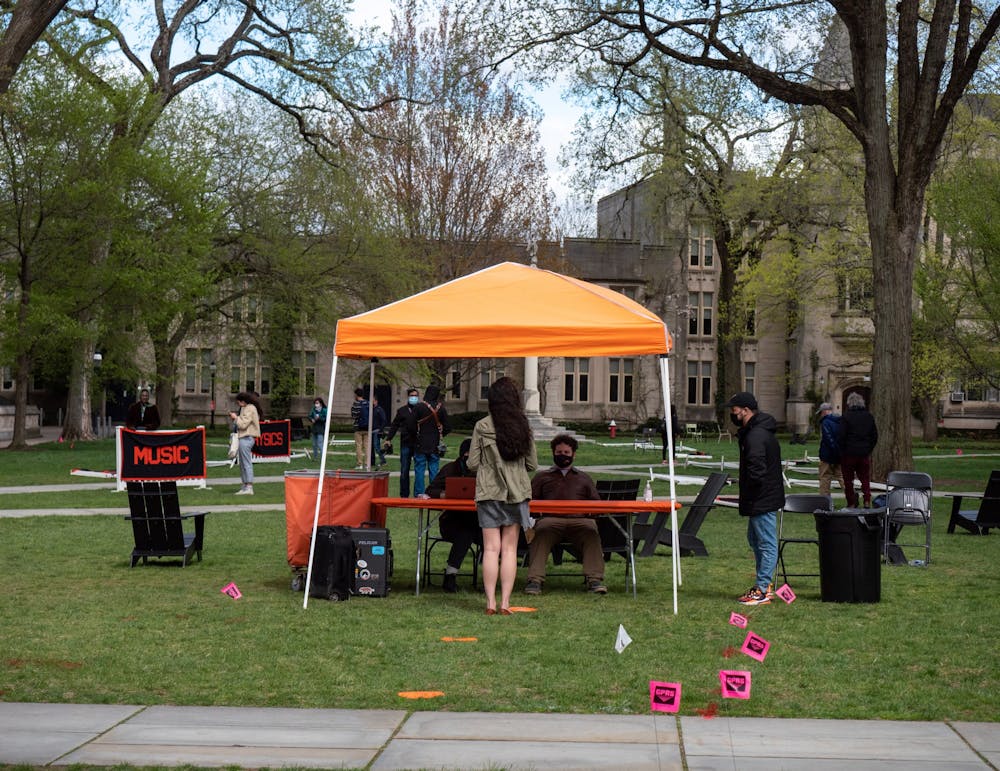Last month, A.B. students in the Class of 2024 gathered around Cannon Green after declaring their concentrations to take the classic Princeton banner photos. To better understand the sophomore class and longer-term trends in what Princeton students are concentrating in, The Daily Princetonian tracked this spring’s declaration decisions.
This year, as with years past, computer science (B.S.E.), the School of Public and International Affairs, economics, and operations research and financial engineering claimed the greatest numbers of new concentrators. The four concentrations have clearly remained the University’s most popular for the past five years. History, politics, and computer science (A.B.) also frequently notch significant student populations.
Three language-based disciplines — French and Italian, Slavic Languages and Literatures, and German — earned the fewest concentrators this year, with just three, three, and four students declaring, respectively. Other regional concentrations were similarly unpopular: only six students declared Near Eastern Studies, seven picked East Asian Studies, and nine selected Spanish and Portuguese.
All six regional concentrations fell into the University’s ten least popular concentrations this year.

The University categorizes departments into four broad divisions: engineering, humanities, natural sciences, and social sciences. Engineering claimed the greatest number of concentrators this year, more than doubling the population of the humanities.

This year’s class bucked a number of recent trends, awarding greater popularity to a smattering of smaller departments.
Near Eastern Studies saw the largest percentage uptick in the number of students declaring over the past year, with an increase of 83.7 percent — the department jumped from one concentrator in the Class of 2023 to six in the Class of 2024. Slavic Languages and Literatures and architecture also saw significant jumps. To that effect, six of the top ten largest increases among non-engineering concentrations over the past year were in the humanities and most, despite their jumps, still numbered among the University’s least popular departments.
In taking a larger view, however, one may see more pronounced trends among concentrations which are now University mainstays.
Predictably, both A.B. and B.S.E. computer science experienced significant increases in concentrators when one compares the number of computer science declarations in 2024 to the average number of yearly declarations over the prior eight years. While routinely popular in the past few years, anthropology and civil and environmental engineering also experienced pronounced increases.
Many concentrations which have experienced recent decreases fall into the humanities and natural sciences. Math and psychology, a pair that is classified as natural sciences, saw the largest year-over-year loss with the Class of 2024.
When comparing this year’s concentrators with averages of the last four and eight years, French and Italian and philosophy noticeably finish in the bottom three of both periods, failing to claim significant popularity with the Class of 2024 despite previous success.
At a larger level, the percentage of undergraduates who choose to concentrate in engineering has increased precipitously since 2016. Social sciences have mostly held steady, while the natural sciences and humanities faced continued losses.
In 2016, University students divided themselves roughly equally into the four fields of study, with no individual category garnering fewer than 21 percent of declarants or greater than 30 percent. This is no longer the case because, as previously noted, engineering students outnumber students in the humanities by more than two-to-one.
The ‘Prince’ also tracked when students declared their concentrations over the last week of declaration. Approximately 20 percent of students held their decision to the last second, as the number steadily ticked up. Two students remain listed as “undeclared” on the Residential College Facebook.
Madeleine LeBeau is a news contributor for the ‘Prince.’ She can be reached at mlebeau@princeton.edu, on Instagram @madeleinelebeau, or on Twitter @MadeleineLeBeau.








